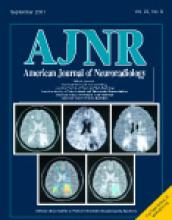In this issue of the AJNR, Iannucci et al (page 1462) describe an application of diffusion-weighted (DW) imaging, a relatively novel MR imaging technique, to the study of multiple sclerosis. This is one of a growing number of quantitative MR applications that represent evolutionary change in the use of MR imaging. These applications also include magnetization transfer techniques (employed in the subject study along with DW imaging), absolute T1 and T2 measurements, functional imaging, and a number of spectroscopic techniques. A significant challenge in the clinical employment of quantitative methods is that underlying physical mechanisms may not yet be fully understood in the context of what can be measured with the MR imaging experiment. For example, one can associate the presence of abnormalities in quantitative measures with the presence of disease, but causality may not be established. Thus, results are sometimes limited to empirical findings of correlation with some other measure or observable process. Still, as in the current study, such results are potentially of great value by providing means of noninvasive disease characterization and, thus, insight into the natural history of disease. Another substantial benefit is derived from the use of validated methods to study the efficacy of novel therapeutic agents. Coupled with results of other studies, including investigations in animal models in which correlation may be observed between the results of an invasive or destructive test and the results of noninvasive MR imaging, human studies such as the present investigation serve to connect clinical observation with imaging findings.
A challenge inherent in the conduct of this research is that comparisons among a number of MR techniques, even those that have been previously compared to more objective measures, are difficult to interpret. This may be complicated further by the inclusion of several or many different measures obtained from the same underlying data (as with multiple parameters derived from a composite histogram). Thus, it is common practice for investigators to exercise “statistical caution” in interpreting correlations among MR measures and between MR imaging and other subjective measures (such as the Expanded Disability Status Scale). It is statistically advantageous to follow up preliminary studies that use “many” measures with targeted studies that have the power to accept or reject the hypothesis that certain measures are significantly correlated. Investigators differing from the authors of the original study may do this only when precise and comprehensive data regarding the study methods are provided. However, even when the authors make a good-faith effort to disclose every nuance of the experimental method, it still may be difficult to control for differences in MR hardware and software. This is in part because modern MR system design objectives are focused on obtaining excellent-quality clinical images for conventional, subjective interpretation. There is in general no provision for assuring that a pixel intensity of, say, 127 on one T2-weighted image is, or can be, related to the same signal intensity obtained on a different image, even when identical imaging parameters are used. This makes it necessary for investigators to minimize any differences in imaging techniques and also to employ some normalization procedure by, for example, acquiring control images. Some of these procedures add noise and thus potentially degrade the study. In some cases, suppression of some of the automated preimaging procedures is necessary to prevent the adjustment of amplifier gains that can change the absolute intensity values. This may require understanding of the details of the operating system and, in some cases, access to system controls that are not available to all users.
In addition to targeted investigations that might establish the usefulness of one or more quantitative MR imaging measures for the assessment of disease state, there is a need for studies designed to connect the technical development of new methods with clinical application. Presently, a gap seems to exist between the physics-based development of some new techniques and the application in the study of disease, leading to sometimes-uncomfortable assumptions regarding the underlying process. Complete understanding of the physical relevance of, for example, fractional anisotropy or magnetization transfer ratio in normal-appearing white matter to the pathophysiology and progression of multiple sclerosis might be gained only by means of a comprehensive approach incorporating numerical modeling, phantom studies, animal research, and application in human subjects. Clearly, robust collaboration between basic scientists and clinical specialists will be advantageous if not essential to such research.
- Copyright © American Society of Neuroradiology











